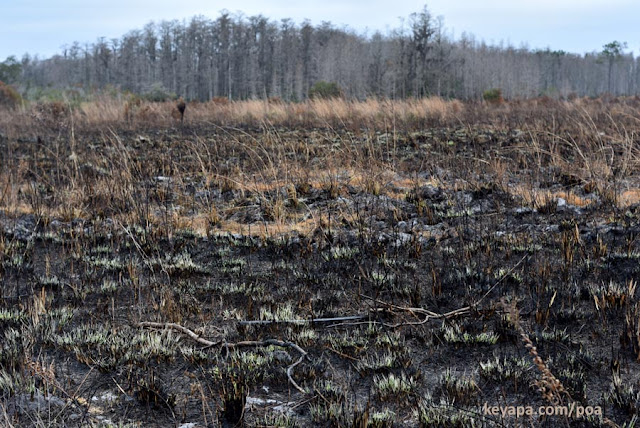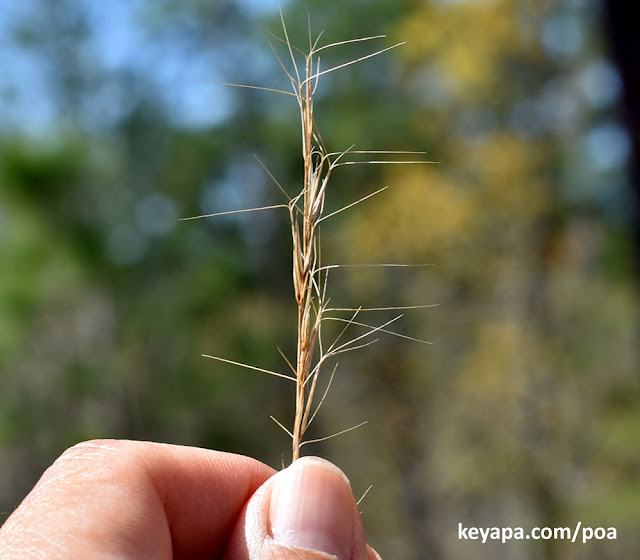 |
| Beautiful Disney Wilderness Preserve |
We were hiking in the Disney Wilderness Preserve, which is managed and owned by the Nature Conservancy, when we came upon blackened areas along the trail, and my wife wondered whether those were accidental fires. When I told her that these were probably set deliberately, she was at first doubtful and I had to explain the rational behind it.
Unfortunately, many people likely would have the same incredulous response to the notion that people would intentionally set fires to pristine areas. But in fact, fire is a natural part of many ecosystems, and it is a major factor in maintaining the integrity and health of the wiregrass-long leaf pine savannas that are the pride of Florida.
 |
| Prescribed burn at Disney Wilderness Preserve in Kissimmee, Florida |
These savannas are characterized by having a relatively open canopy of long leaf pine (Pinus palustris), a sparse or absent midstory, and an understory dominated by bunch grasses composed mainly of Aristida beyrichiana (synonymous with A. stricta var beyrichiana) and various Andropogon species. Without a relatively frequent fire regime (2-3 years) to remove other species, the area will slowly be converted to a less diverse closed canopy forest.
 |
| A. beyrichiana (wiregrass) inflorescence and habit |
The foundation of this habitat is A. beyrichiana (wiregrass), a perennial C4 grass which normally only flowers after fire during the growing season. It is an obligate pyrogenic species, and A. beyrichiana and the other native bunch grasses provide the fine fuel that makes this habitat possible by keeping tree density low and light levels high. If fire is actively excluded from an area, this species slowly disappears from the landscape, probably due to competition or the growing leaf litter, and its loss will negatively impact the entire ecosystem and might ultimately result in its disappearance. Wiregrass is thus essential if you want to restore any degraded wiregrass-long leaf pine habitat.
 |
| The characteristic three-awned spikelets of wiregrass |
Fortunately, studies have shown that even after fire exclusion for decades, this species is resilient enough to start flowering again after a fire (Fill et al, 2021; Shearman et al, 2019). This gives hope that it will be possible to restore degraded wiregrass-pine savannas back to their pristine condition with the start of a regular fire regime. But in order for us to continue to maintain these precious habitats, we must change our widely held view that fire is always bad.
People need to rethink the way they view fire in nature, and realize that fire is a natural part of the system that helps maintain beautiful and unique habitats like the wiregrass-pine savannas of the southeastern USA.
Spread the word if you can.
 |
| Muhlenbergia expansa, which can be mistaken for A. beyrichiana |
Literature Cited:
Fill JM, Zamora C, Baruzzi C, Salazar-Castro J, Crandall RM (2021) Wiregrass (Aristida beyrichiana) survival and reproduction after fire in a long-unburned pine savanna. PLoS ONE 16(2): e0247159.
Shearman, T. M., Varner, J. M., and Kreye, J. K.. 2019. Pyrogenic flowering of Aristida beyrichiana following 50 years of fire exclusion. Ecosphere 10( 1):e02541. 10.1002/ecs2.2541
No comments:
Post a Comment